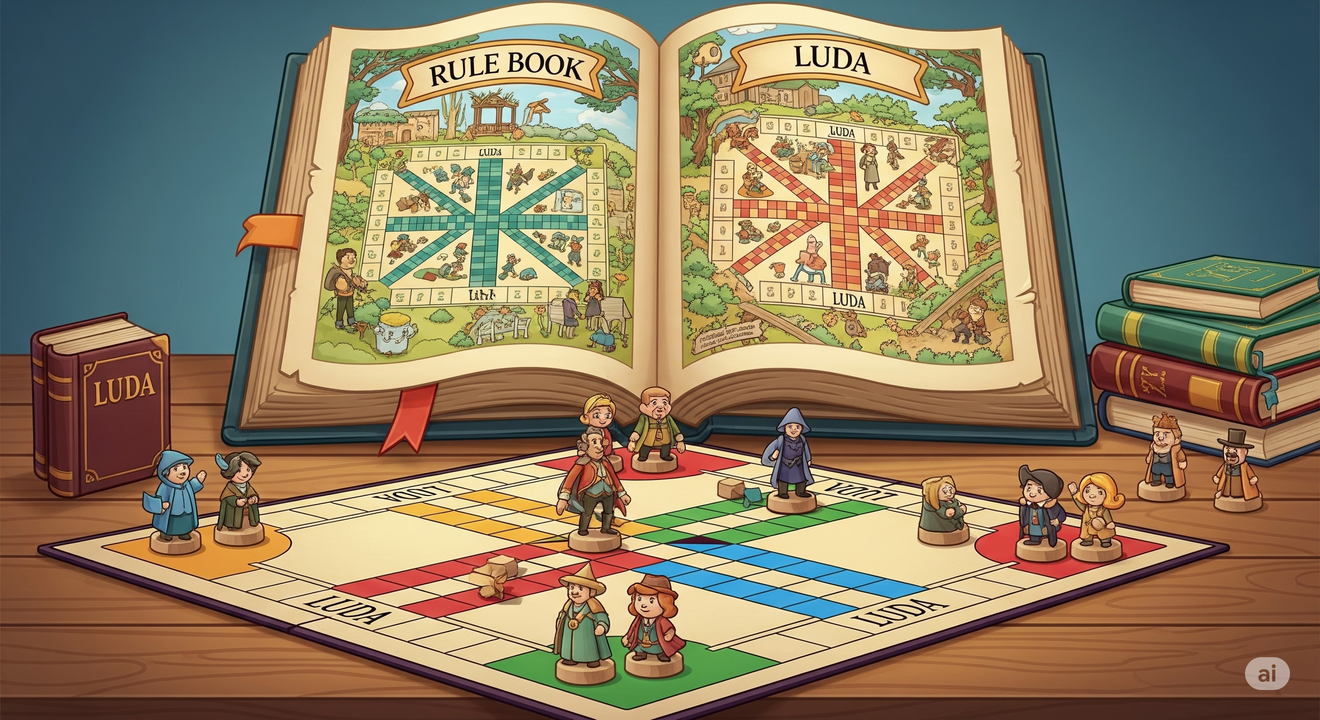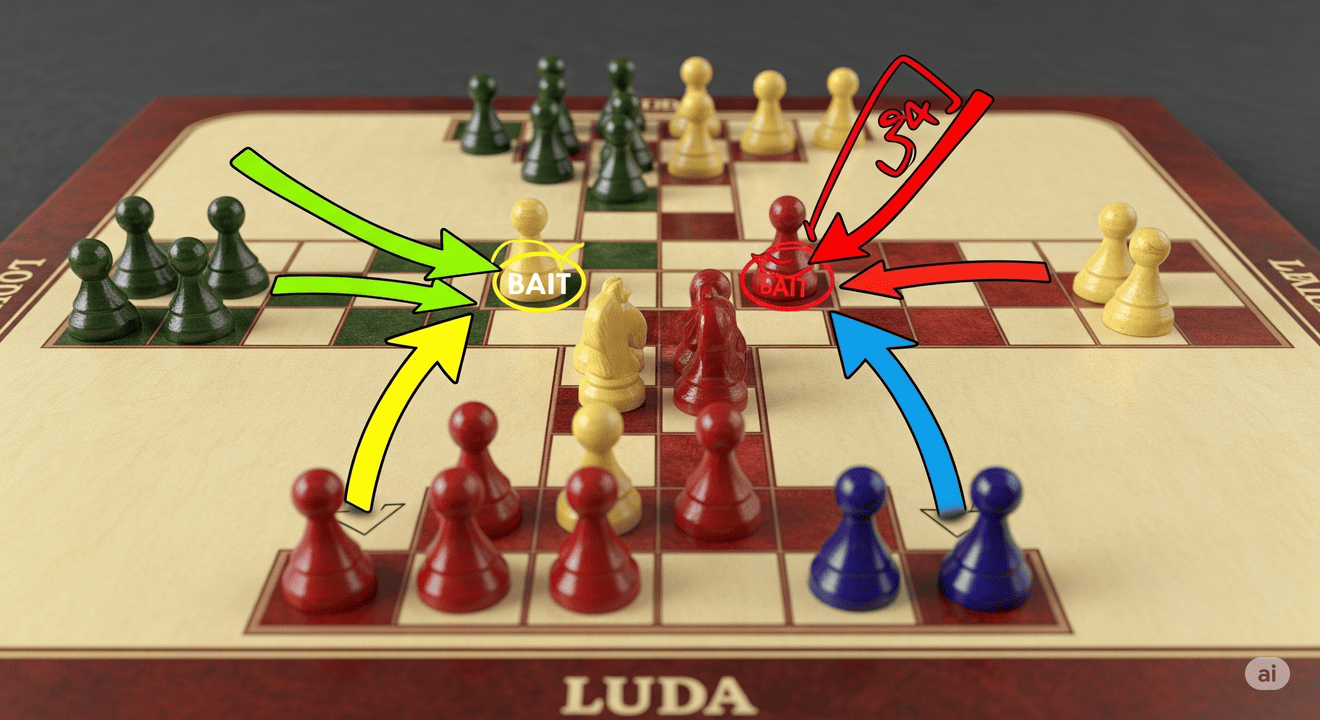Ludo Game Rules Explained: The Complete Guide for Players in India (2025)
From the bustling metros of Mumbai and Delhi to quiet towns across the country, Ludo is more than just a game in India, it’s a cultural touchstone. It’s the sound of the dice rolling during summer holidays, the strategic whispers during Diwali family get-togethers, and the roar of victory that settles friendly rivalries. Yet, almost every group plays with its own “house rules,” leading to endless debates. Can a single pawn pass a block? What really happens when you roll three sixes in a row?
Consider this your official rulebook. This guide will provide the complete, official rules of Ludo as played on Ludo Supreme Gold. Whether you’re playing for the first time or you’re a seasoned player who wants to confirm the official rules for competitive play, we’ll cover everything. Mastering these rules is the first step to becoming a true Ludo champion in India.
The Objective: What’s the Goal of Ludo?
The objective of Ludo is simple to understand but challenging to achieve. You must be the first player to race all four of your pawns (commonly called goti) from your starting yard, around the entire board clockwise, and safely into your colored home column. The first player to successfully get all four of their pawns home is declared the winner. It’s a thrilling race to the finish, full of strategy, risk, and rewarding moments.
The Game Setup: What You Need to Know Before You Start
Before you roll the dice, it’s vital to understand the digital game board and its components.
- The Board: The Ludo board is shaped like a cross, with each arm containing three columns of squares. The main path is the track that all players’ pawns travel on.
- The Starting Yards: These are the four large, colored squares in each corner. This is where your four pawns start and return to if they are captured.
- The Pawns (Goti): Each player gets a set of four pawns of a single color.
- The Starting Square: Each color has a specific starting square on the main path, where a pawn first enters the game.
- The Home Column: This is the final stretch for your pawns, matching your chosen color. This area is your exclusive territory; no opponent can enter it.
- The Home Triangle: Located at the center of the board, this is the final destination. Getting all four pawns here is your ultimate goal.
- The Dice: On Ludo Supreme Gold, the game is played with a single six-sided die, ensuring a fair and standard experience for everyone.
Core Gameplay Rules: How to Play, Turn by Turn
These are the fundamental rules that govern the flow of the game. Mastering them is essential for every player.
Starting the Game & Getting Pawns Out
All four of your pawns begin the game inside your starting yard. To move a pawn out of the yard and onto your starting square, you must roll a six. If you have no pawns on the board, you continue to roll on your turn until a six is rolled. As a bonus, rolling a six always grants you an extra turn!
Moving Your Pawns
Once a pawn is on the main path, it moves clockwise according to the number rolled on the die. If you roll a 3, you can choose any one of your active pawns and move it three squares forward. If a legal move is possible for any of your pawns, you must make a move.
Capturing an Opponent’s Pawn
This is where the real action happens. If your pawn’s move ends on a square that is already occupied by a single pawn of an opponent, that opponent’s pawn is “captured.” A captured pawn is sent immediately back to its owner’s starting yard. That player will then need to roll another six to bring it back into the game. Capturing is a key strategic element to set your opponents back.
The Safe Zones (Star Squares)
Certain squares on the board are marked with a star. These are designated “safe zones.” Any pawn resting on a star square cannot be captured. Even if an opponent lands on the same star square, your pawn is safe. These squares serve as vital strategic points to rest your pawns during their long journey around the board.
Special Rules Every Pro Player in India Needs to Know
While the basics are simple, these special rules add strategic depth and are enforced on Ludo Supreme Gold to ensure competitive and fair gameplay.
The Rule of Sixes
The number six is special in Ludo, and it comes with unique rules.
- Bonus Turn: As a standard rule, rolling a six grants you an additional roll of the die.
- Three Consecutive Sixes Rule: To maintain fairness and prevent a single player from running away with luck, there’s a crucial tournament rule. If a player rolls a six three times in a row, their turn is forfeited, and the third six is nullified. This prevents runaway lucky streaks and keeps the game balanced.
Blockades (Creating a “Block”)
You can form a defensive wall by landing two of your own pawns on the same square. This is known as a “block” or “blockade.” An opponent’s single pawn cannot pass this block. They will be stuck behind it until you decide to move one of your two pawns. This is a powerful defensive move to protect your lead or an offensive move to trap an opponent’s key pawn.
Entering the Home Column & Winning
The final phase of the game has its own important rules.
- Safety in the Home Column: Once your pawn enters your colored home column, it is safe from all opponents.
- Exact Roll Required: To move a pawn into the final home triangle, you must roll the exact number needed. For example, if a pawn is 4 squares away from home, you must roll exactly a 4. If you roll a 5, and have no other active pawns to move, your turn is forfeited. This makes the final moments of the game incredibly tense and exciting.
Conclusion: From Knowing the Rules to Winning the Game
Congratulations! You are now an expert on the official rules of Ludo. Knowing these rules inside and out is the solid foundation upon which every great Ludo strategy is built. No more arguments, no more confusion—just pure, strategic gameplay.
But the journey doesn’t end here. Knowing the rules is one thing; using them to dominate the game is another. The next step is to learn the art of strategy.
Now that you are a master of the rules, elevate your gameplay by learning the 7 Unbeatable Ludo Tricks used by top players across India. It’s time to turn your knowledge into victory!





Post Comment